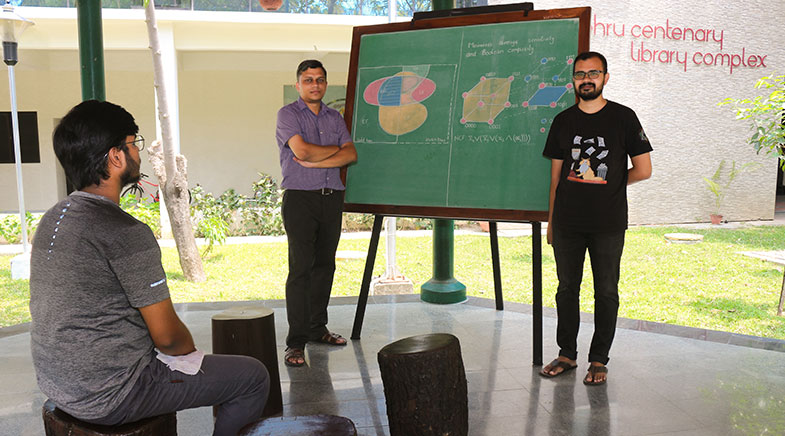Harnessing the full potential of biology
-
- from Shaastra :: vol 01 issue 02 :: Mar - Apr 2022

Synthetic biology is one of the more widely discussed topics now, but it is actually an old term. The French biologist Stéphane Leduc coined it in 1910, in a paper titled Physico-chemical theory and spontaneous generations. Leduc thought that biology could easily be reduced to physics, specifically fluid physics. His ideas about fluid physics and biology turned out to be wrong, but several decades later biologists borrowed the term.
Half a century later, Leduc's naïve ideas of physical forces and development were replaced by a knowledge of the molecular basis of heredity. Scientists began to understand the molecular mechanism of life, and some of them learned to manipulate the genetic machinery of life. It isn't possible to assemble an organism from scratch, but some of its molecular components could be built from the ground up. Scientists have learned to take a living organism and tinker with its parts, generating one with a different set of properties.
Our Cover Story looks at the development and potential of synthetic biology, specifically from an Indian point of view. The top-down approach of synthetic biology, where scientists change the genetic component of an organism with precision, will create new kinds of food, medical treatment, chemicals, and fuels. This shift from a world based on chemistry to one based on biology has enormous potential - and some risks as well.
Manupriya's Cover Story is a survey of some synthetic biology projects in India, both in the academic world and in industry. India has not invested significantly in this area, and synthetic biology projects are scattered in a few top institutions in the country. However, even these early-stage projects offer a glimpse of how synthetic biology will change the industrial world over the decade. An accompanying story looks at the topic from the bottom up, on how scientists are attempting to build networks using living systems.
In an interview to Manupriya, Dr Tobias Erb at the Max Planck Institute of Terrestrial Biology talks about his work using synthetic biology to fix carbon in the atmosphere and how it can help address rapid climate change. In a Guest Column, entrepreneur and writer Jag Bhalla takes a contrarian view of our assumptions about biology, especially about equating machines that are designed top-down and biological systems that have evolved over hundreds of millions of years.
A shift from a world based on chemistry to one based on biology has enormous potential - and some risks as well.
Elsewhere, Shadma Shaikh writes about a start-up that is developing tools to detect how bacteria can respond to antibiotics. Climate change is the focus of a small story by T.V. Jayan, where he reports on the research of Govindasamy Bala analysing how aerosol seeding will affect the Indian monsoon. Jayan's other story is about hemp, now acquiring a reputation as a "miracle crop" with uses in several industries.
Our data-driven graphics story, The chips are still down, takes a deep look at the ecosystem of semiconductor manufacturing, specifically the economics of the industry and India's difficult path towards viability of semiconductor manufacturing. India has built a large pool of people skilled in chip design, but exploiting this talent pool will not be easy because of the high investments and the complexities of manufacturing.
We also focus on some earth-shaking developments. Srinath Perur writes about three aspects of research on earthquakes: understanding them, predicting them, and preparing for them. On The cancer detective, Nidheesh M.K. profiles Dr Subhash Narayanan, a former physicist who set up a company to diagnose oral cancer. Narayanan set up the company after his retirement. He had seen the importance of good tools because his mother, who did not have cancer, went through painful radiation treatment after a false diagnosis. The cheap and effective device that his company developed is being deployed in hospitals and is saving lives.
Also in the magazine are stories on how AI is helping lawyers unravel complex cases, on how a company has advanced on breath-based diagnostics, and some innovative start-ups. On The Universe in Swirling Mercury, Mywish Anand reports on a new liquid mirror telescope in Nainital, which is expected to bring in an era of low-cost astronomy. On Rajinder Kumar: He saw Beauty in Bubbles (1934 - 2022), we have an obituary of Prof Rajinder Kumar, who passed away on February 7. Kumar was an exceptional chemical engineer who wrought a revolution in understanding bubbles in reactors. Through his analytical thinking and exceptional demeanour, he also influenced three generations of chemical engineers and policymakers in the country.
Have a
story idea?
Tell us.
Do you have a recent research paper or an idea for a science/technology-themed article that you'd like to tell us about?
GET IN TOUCH














